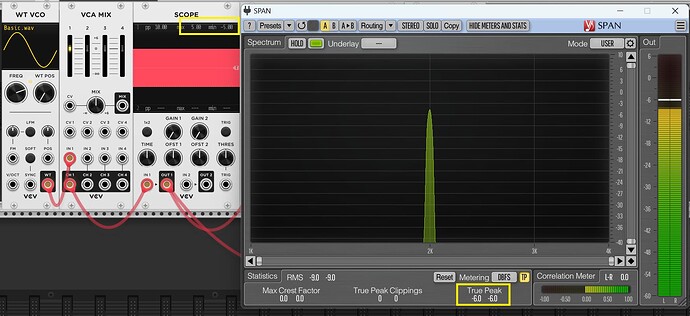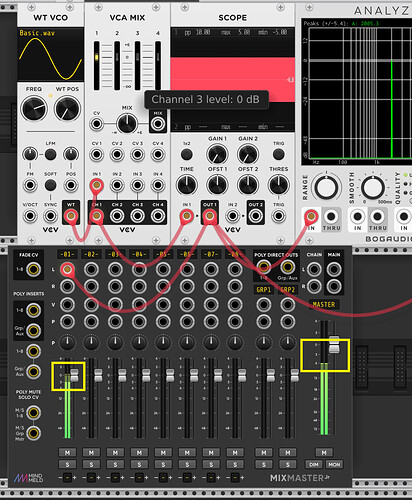Not really sure about this ![]() dB its relative to common value in Rack. As explained by Vortico here,
10V is 0db and 5V is -6.02 db.
dB its relative to common value in Rack. As explained by Vortico here,
10V is 0db and 5V is -6.02 db.
In fact, if I feed a basic Sine (2khz) to scope and Span, it works as expected:
Why on bogaudio analyzer is 0db?
On MixMaster mix, there are even both ![]()
On single channel 0db, on Master -6db… ![]()


